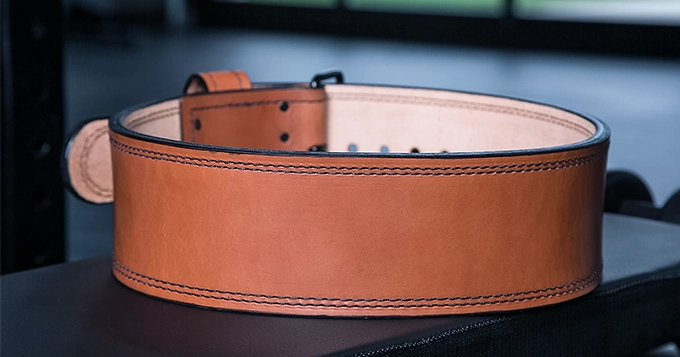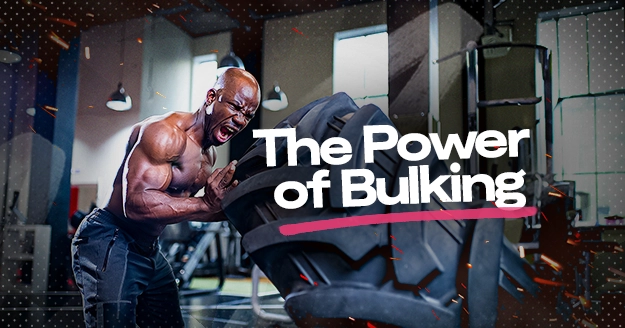What is a Weight Lifting Belt?
A lifting belt is a sturdy, usually leather or nylon belt worn around the waist during weight lifting exercises. It typically features a thick band that wraps snugly around the abdomen, providing support and stability to the core and lower back.
Weight lifting belts have become a staple in gyms worldwide, donned by both seasoned lifters and newcomers alike. But what exactly is the purpose of these sturdy accessories? Are they essential for a successful lifting session, or are they just another piece of gym gear that adds to the aesthetic?
Let’s discuss how to wear a lifting belt, how to choose the right weight lifting belt, unravel its true purpose, and more.
Different Types of Weightlifting Belts
- Powerlifting Belt:
- Powerlifting belts are typically wider in the back and taper down towards the front, offering substantial support to the lower back and core.
- They’re favored by powerlifters for exercises like squats, deadlifts, and bench presses, where maximal stability and support are crucial.
- These belts are often made of thick leather or sturdy nylon materials to withstand heavy loads and provide long-lasting durability.
- Olympic Weightlifting Belt:
- Olympic weightlifting belts are narrower compared to powerlifting belts, allowing for better mobility and flexibility during dynamic movements.
- They’re designed to provide support without restricting the lifter’s range of motion, making them ideal for exercises like snatches and clean and jerks.
- These belts are usually made of softer materials like suede or synthetic fabrics to ensure comfort during explosive movements.
- Velcro Closure Belt:
- Velcro closure belts offer convenience and adjustability, as they can be quickly tightened or loosened to achieve the desired fit.
- They’re popular among recreational lifters and athletes who value ease of use and versatility.
- These belts may not provide as much support as traditional buckle belts, but they’re suitable for lighter lifting sessions or individuals who prefer a less rigid feel.
- Tapered Belt:
- Tapered belts feature a narrower front compared to the back, allowing for greater abdominal engagement while still providing support to the lower back.
- They strike a balance between the stability of a powerlifting belt and the flexibility of an Olympic weightlifting belt, making them suitable for a variety of lifting styles.
- Tapered belts are favored by lifters who want support during heavy lifts but also value freedom of movement for exercises that require agility and speed.
- Nylon Belt:
- Nylon belts are lightweight and flexible, making them an excellent choice for athletes who prioritize mobility and comfort.
- They offer decent support for moderate to heavy lifting sessions while remaining breathable and less bulky than leather belts.
- Nylon belts often feature a Velcro or buckle closure system for easy adjustment and secure fit.
- Leather Belt:
- These are known for their durability and stiffness. They provide maximum support and stability during heavy lifts.
- They mold to the lifter’s body over time, offering a personalized fit and enhanced comfort with continued use.
- Leather belts are favored by serious lifters and strength athletes who require superior support and longevity from their equipment.
How to Choose the Appropriate Belt for You
- Assess Your Goals
Determine your specific fitness goals and the types of exercises you’ll be primarily performing with the belt. Different belts are designed for various purposes, such as powerlifting, bodybuilding, or general weight training.
- Determine The Correct Size
Make sure your belt fits snugly around your waist without feeling too tight. You should be able to slide a finger between the belt and your body without discomfort.
- Choosing The Optimal Width
The width of the belt depends on the type of lifting you do. Powerlifters usually choose wider belts, whereas Olympic lifters prefer narrower ones to maintain better mobility.
- Check Material and Construction
Take note of the material and construction quality of the belt. High-quality leather or sturdy nylon belts are durable and provide excellent support, while cheaper materials may wear out quickly and offer less stability.
What is The Purpose of a Weight Lifting Belt?
- Core Stability
A weightlifting belt serves as a safety measure for your core muscles, providing stability to the spine and surrounding muscles. Promoting a more neutral spinal posture helps lower the risk of injuries and strains, especially during intense workouts where you’re pushing your limits.
- Intra-Abdominal Pressure
Another purpose of weight lifting belt is its role in increasing intra-abdominal pressure. By cinching around the waist tightly, the belt creates a rigid structure against which the abdominal muscles can contract. This increased pressure within the abdominal cavity provides additional support to the spine, enhancing overall stability and strength during lifts.
- Preventing Hyperextension
Hyperextension, or excessive arching of the lower back, is a common issue during heavy lifting exercises such as squats and deadlifts. This can put undue stress on your spine and increase the risk of injury.
One of the weight lifting belt purpose is to limit hyperextension by providing a physical barrier that reminds the lifter to maintain proper form and posture throughout the entire movement.
- Psychological Confidence
Beyond its physical benefits, a weight lifting belt can also offer a psychological boost to the lifter. Knowing that you have the added support of a belt can instill confidence and help you push through challenging lifts with greater determination. This mental aspect of lifting can be just as crucial as the physical preparation, contributing to improved performance and results in the gym.
- Reduce Spinal Stress
Lifting heavy weights places significant strain on the spine. A belt helps distribute this stress evenly, thus easing the load on the lower back. Additionally, it acts as a cue to engage your core muscles, preventing excessive arching or rounding of the back.
- Improve Lifting Performance
Incorporating a weightlifting belt into your routine could enhance your lifting performance. With added support, you may discover the ability to handle slightly heavier weights or complete more repetitions while still maintaining proper form.
- Improves Your Form
Maintaining proper form during exercises is crucial for a productive workout session. Without it, you may not achieve optimal results. Therefore, practicing good form is essential for better outcomes.
A weight lifting belt purpose is to aid in achieving this goal by improving back posture, which in turn helps in executing the correct technique.
How to Wear a Lifting Belt?
Step 1: Wrap the Belt
How to wear a lifting belt for optimal effectiveness? First, position the belt just above your hip bone. This ensures full contact across the back, sides, and front of your torso.
If you experience restriction or pinching with the weightlifting belt, it’s likely not positioned correctly. Try adjusting its placement first. If issues persist, consider trying a belt with a different thickness or adjusting the tightness for a better fit.
Step 2: Inhale Slightly and Tighten
The belt should be snug but not excessively tight. You should feel comfortable and able to breathe properly without feeling overly restricted. Leave some room for your stomach to expand during bracing, as this helps create tension and support. As you begin to brace, the belt will naturally fill out and provide the necessary support.
You should be able to insert your index finger down the back of the belt. If you can fit more than that, the belt may be too loose or not positioned correctly.
Step 3: Breathe and Expand
The purpose of using a weightlifting belt is to enhance the stability of your back. Your primary defense against back weakness lies in your core muscles. By engaging and bracing your core, you ensure tightness. The belt facilitates a more aggressive bracing technique. This involves taking a deep breath into your abdomen and contracting both your abdominal and lower back muscles. Maintain this posture throughout the lifting process.









